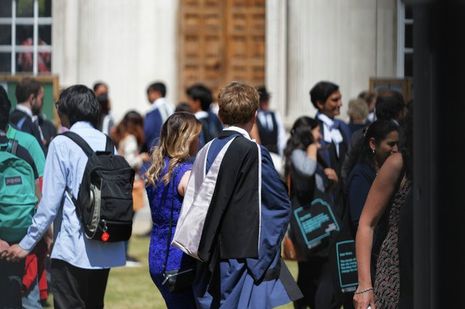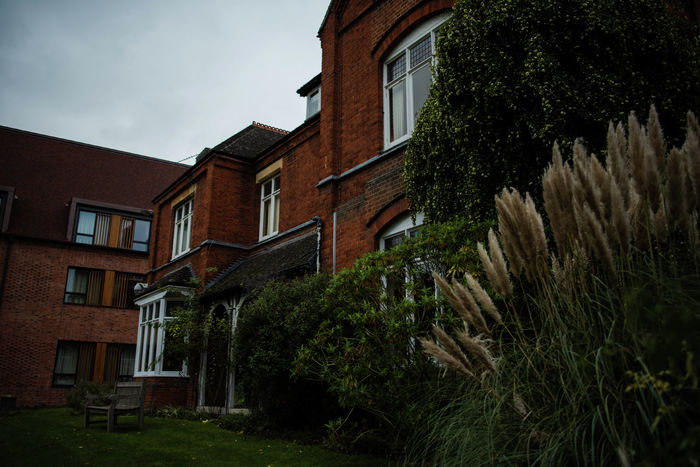Selective schooling skews admissions
A Varsity investigation has revealed the influence of selective schools on state-school admission statistics

A Varsity investigation into the trends around applications from the maintained sector has found that the proportion of grammar school students increases by approximately 19% from the pool of maintained sector applicants to offer holders.
When representing admissions, home students are broadly categorised into maintained sector (state) and private schools. This often leads to the university, and individual colleges, presenting admission statistics in the form of the broad “state school” background, such that 72.5% of students from the 2022 cycle come from the maintained sector. However, this fails to address the distinction between selective and non-selective schools within the state sector.
A freedom of information request to undergraduate colleges has provided further insight into the backgrounds of maintained sector applicants and offer holders from the 2023 admissions cycle. All percentages relate to the overall grouping of all maintained sector schools, excluding independent and non-UK admissions.
Of the 14 colleges from which information was obtained, Homerton and Churchill had the highest proportion of non-selective school applicants in the 2023 cycle, making up 81% of their state school applications. Conversely, 65% of state school applicants to Trinity Hall had a non-selective school background, the lowest proportion of the colleges listed here.
In the 2023 cycle, the vast majority of colleges which responded saw an increase in the proportion of state school students from a grammar school background within the pool of offer holders from the pool of applicants, and a decrease in the proportion of non-selective school students. Only one college included here, Sidney Sussex, revealed that their proportion of non-selective offer holders increased from applicants — by one percentage point.
In all instances, there was a higher proportion of non-selective school applicants from the maintained sector than grammar school applicants. In the majority of cases, the difference between proportion of applicants and offer holders from the two categories was 10 percentage points or less. However, Magdalene, Downing, and Trinity Hall all saw larger decreases between non-selective applicants to offer holders.
In a similar investigation carried out by Varsity in 2020, it was found that Gonville and Caius and St John’s had the lowest proportion of applicants, 40%, from a non-selective background. Gonville and Caius was also reported as having the second lowest proportion of acceptances with no private or grammar background, 31%. In 2023, however, 69% of incoming Caius home students are from the state sector, placing the total proportion of incoming Caius students with a non-selective school background at approximately 45%.
Dr. Chris Scott, Caius’ Tutor for Admissions and Outreach, told Varsity that “Caius changed its admissions policy in 2020 to prioritise academic potential. Since then we have also tripled our outreach capacity.”
For the 14 colleges listed, the overall median percentage of maintained sector applicants from non-selective schools is 73%, while the median percentage of offer holders from the same background is 65.5%. The median percentage of maintained sector applicants from grammar schools is 32.5%, and the median of maintained sector offer holders from grammar schools is 31%, an increase of 25%.
Varsity's findings also include the success rate of applicants who moved from private education at GCSE level to state education during the post-16 period. According to reports from earlier this year, students who make this switch are a third more likely to be successful in their application.
At both Corpus Christi and Newnham, the proportion of state-educated students who had moved from private education at GCSE was higher in the pool of offer-holders than among initial applicants. At Corpus Christi, this was an increase of 19%, and at Newnham, this was an increase of 97%. At Gonville and Caius, however, there was a decrease of 21% from applicants to offer holders. In all three cases, the proportions of applicants who fit this description were minimal, suggesting that it would not be possible to discern any trends relating to the success of their applications.
Chris Scott told Varsity, “A small proportion of students across the UK make a switch from the independent to the state sector for sixth form, and vice versa, and there is a vast range of potential reasons for this, including financial capability and other personal circumstances, and availability of desired A levels. Moving from an independent school to a state school does not increase an applicant’s chance of success.”
On the educational divide, he added: “Our aim in admissions is to consider each applicant we receive as an individual, in their context, and to make a judgement about their potential; it is not to discriminate or to strive towards quotas. The state/independent distinction has value but it can of course often mask a range of educational experiences and opportunities.”
This article was updated on 17/10/23 to reflect updated FOI figures provided by Selwyn College.
 News / CUP announces funding scheme for under-represented academics19 December 2025
News / CUP announces funding scheme for under-represented academics19 December 2025 News / SU reluctantly registers controversial women’s soc18 December 2025
News / SU reluctantly registers controversial women’s soc18 December 2025 News / Cambridge welcomes UK rejoining the Erasmus scheme20 December 2025
News / Cambridge welcomes UK rejoining the Erasmus scheme20 December 2025 Features / Should I stay or should I go? Cambridge students and alumni reflect on how their memories stay with them15 December 2025
Features / Should I stay or should I go? Cambridge students and alumni reflect on how their memories stay with them15 December 2025 Film & TV / Timothée Chalamet and the era-fication of film marketing21 December 2025
Film & TV / Timothée Chalamet and the era-fication of film marketing21 December 2025










